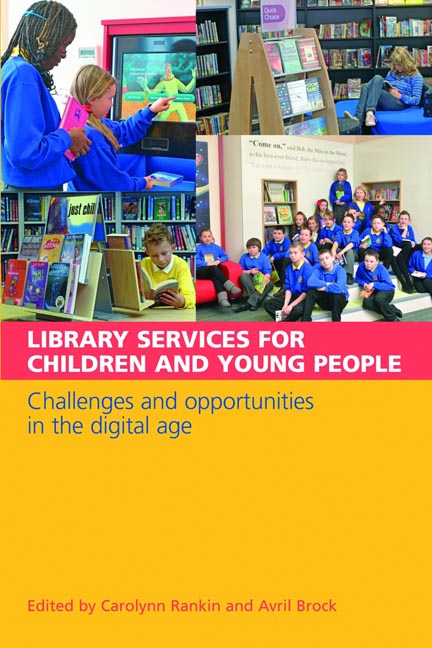Book contents
- Frontmatter
- Dedication
- Contents
- Contributors
- Foreword
- Acknowledgements
- Introduction and vision for the book
- Part 1 Children's library services – policy, people and partnerships
- Part 2 Connecting and engaging – reaching your audience and catching the latest wave
- 5 Libraries, literacy and popular culture – let's get reading!
- 6 Libraries, literacy and popular culture – what's cool to read?
- 7 Creative integration of information technology in the school library
- 8 Comics, manga and graphic novels – developing, selecting and promoting a core collection for teenagers and young people
- 9 Connecting and engaging with children and young people – the Australian public library perspective on outreach and marketing
- 10 Case study. Partnerships and library outreach in the National Year of Reading 2008
- Part 3 Buildings, design and spaces – libraries for children and young people
- Part 4 Issues for professional practice
- Index
8 - Comics, manga and graphic novels – developing, selecting and promoting a core collection for teenagers and young people
from Part 2 - Connecting and engaging – reaching your audience and catching the latest wave
Published online by Cambridge University Press: 08 June 2018
- Frontmatter
- Dedication
- Contents
- Contributors
- Foreword
- Acknowledgements
- Introduction and vision for the book
- Part 1 Children's library services – policy, people and partnerships
- Part 2 Connecting and engaging – reaching your audience and catching the latest wave
- 5 Libraries, literacy and popular culture – let's get reading!
- 6 Libraries, literacy and popular culture – what's cool to read?
- 7 Creative integration of information technology in the school library
- 8 Comics, manga and graphic novels – developing, selecting and promoting a core collection for teenagers and young people
- 9 Connecting and engaging with children and young people – the Australian public library perspective on outreach and marketing
- 10 Case study. Partnerships and library outreach in the National Year of Reading 2008
- Part 3 Buildings, design and spaces – libraries for children and young people
- Part 4 Issues for professional practice
- Index
Summary
Introduction
Comics, manga (Japanese comics) and graphic novels are all different kinds of what has been called ‘sequential art’. They can be created for any age group and in any genre. This body of work is best thought of as existing within a structure parallel to that of text fiction, which is equally flexible, being capable of creating very basic and simple material, right the way through to extremely complex and challenging texts. Comics, manga and graphic novels, in addition, may be nonfiction, despite the label ‘graphic novel’, and there are a range of texts, often autobiographical, but not limited to that genre, which may well form part of a core collection. You may also wish a collection to include, for instance, books about comics, such as histories of national schools or genres, ‘how to draw’ guides, academic analysis of the medium or material about specific creators.
Given the way that this is such a complex area, one needs to be aware of the potential of the medium, before building a collection, which is why I have begun with a loose definition (although definitions of this medium are widely debated, as Stegall-Armour (2010) discusses). Not knowing about the scope of the medium can result, for instance, in collections for younger readers, containing material written for older adults. This can occur because of the way that national stereotypes of the medium can dominate one's perception of it. For instance, in Britain, the stereotype dictates humour comics for very young readers, whilst in the USA, it is the superhero genre. Developing your knowledge, then, is the first stage in developing a collection and avoiding common pitfalls, which are created by assumptions about the medium. This chapter will talk about some of the resources you can draw on, in order to develop both your knowledge and a collection.
Where to start
It is possible to build a manga and graphic novel collection in any kind of library, which challenges a skilled reader of any age. It is also true, as with the traditional text-based book, that some work will be useful to support emerging readers, but, as the reader needs to become skilled in multiple literacies, both visual and traditional, it is important to remember that these are not simple texts. Being clear about the nature of the collection you wish to develop is key, as is thinking through location and display.
- Type
- Chapter
- Information
- Library Services for Children and Young PeopleChallenges and opportunities in the digital age, pp. 119 - 128Publisher: FacetPrint publication year: 2012



